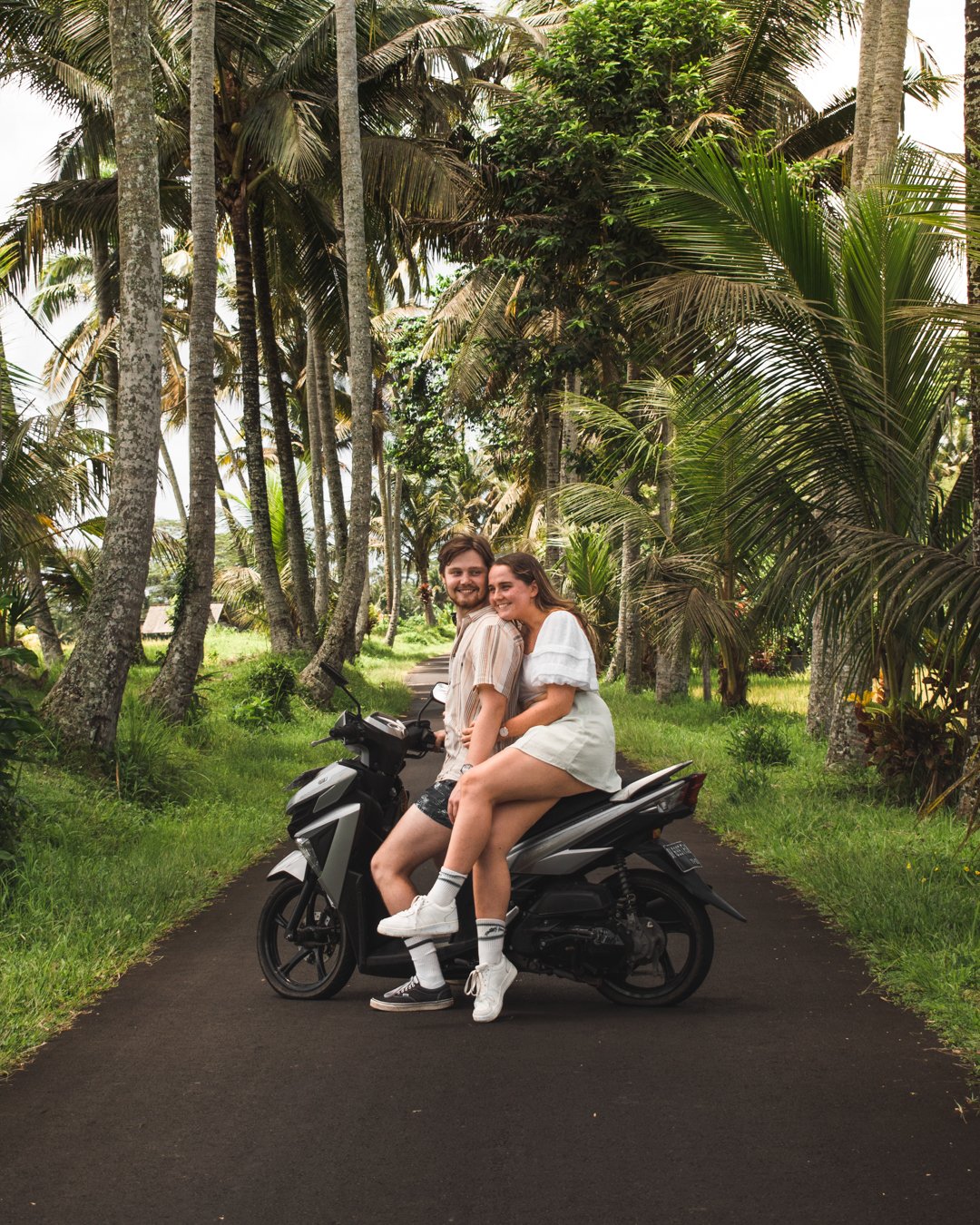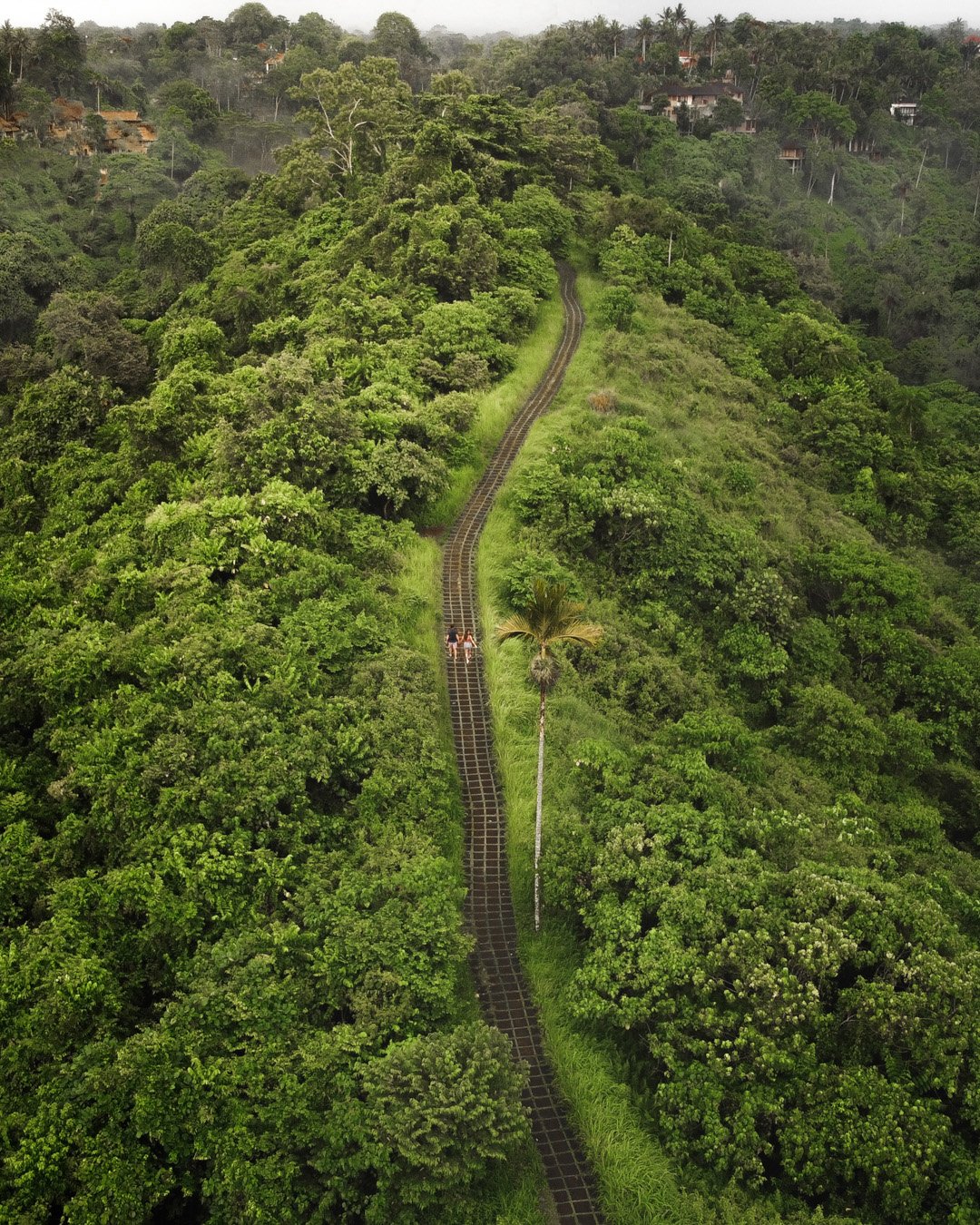Riding scooters in Bali, and what you need to know
8 Minute Read | Written by The Way To Wherever
The easiest way to get around in Bali is by scooter. One of the first things you’ll notice when you arrive is how significantly they outnumber cars on the roads of Indonesia, and it’s true that they’re a perfectly safe mode of transport as long as your sensible. They’re so small that navigating busy traffic and Indonesia’s tiny roads becomes a breeze, all while being loads more fuel efficient than driving a car!
Here are the things you have to know about riding scooters in Bali, but first, we wanna talk about…
Disclaimer: We only recommend products & services we know and trust and all opinions are our own. This post may contain affiliate links that at no additional cost to you, might earn us a commission.
Gojek & Grab
If you’re visiting Bali for two weeks or less and are not already confident riding a scooter, the most convenient, safest and cost-effective option is to use Gojek/Grab. These are two super popular ride-sharing/food-delivery/appointment-booking/courier/do-it-all apps that facilitate both car and scooter equivalents of Uber rides, only a fraction of the price. You can use these services to get around in most places* all over Bali, without having to worry about anything related to using your own bike.
*Some parts of the island, mainly the north and east, do not have as much of a network of users for these apps, so you might need to arrange a private driver in these areas. Just grab the WhatsApp numbers of any drivers you get, and they’re usually available for private rides anywhere on the island.
Let us be your photo tour guides
We offer personalised, private photo tours of Bali and would love to take you to all the beautiful places we’ve visited across the island.
Mention this in an email or direct message to @thewaytowherever or our photography service @lensandlumen to receive a 15% discount!
Licensing & insurance
The two groups interested in your licence, local police and your insurance company. It’s important to be insured while you’re in a foreign country, especially while riding a scooter you might be unfamiliar with. You will read and see endless horror stories of tourists involved in scooter accidents, and while they’re not common, any emergency medical bill should be covered by insurance. Do your research on your travel insurance, many don’t cover riding scooters/motorbikes at all unless and all others will require very specific licences to be held by the insured person.
The other important consideration is police and the law. In Indonesia you must have either an Indonesian motorcycle licence, or an international drivers permit that states you have a valid motorcycle licence in your home country. Police are known to regularly pull tourists over in Bali, and making sure you have the correct licence can prevent fines. Fines that we’ve heard vary depending on the police officers mood.
Getting petrol
Coming from heavily regulated Australia, the petrol situation in Indonesia took us a little by surprise. Big petrol stations (of which there’s only one company in Bali, Pertamina), are not always common in areas outside of dense urban hubs. There are still a few ways to fill up. Obviously the big Pertamina stations are the first, and they always have two different unleaded fuel options, ‘Pertalite’ (green-blue, cheaper, lower octane) and ‘Pertamax’ (slightly more expensive, blue, higher octane). When you pull up to a bowser, just tell the attendant which you want and how much, and they’ll sort you out. All petrol in Bali is cash-only.
The second are usually branded as ‘Perta-mini’. Small red and blue boxes on wheels with tubes of fuel in them attached to hand pumps, usually found outside smaller stores on the side of the road. The red side is usually the high octane ‘Pertamax’ and the blue, ‘Pertalite’. Same deal as the bigger stations, only less official and more expensive. Tell the shopkeeper which fuel you want and how much, and they’ll get it done. For these, the tubes of fuel are marked with IDR prices that show you how much you get each price (10,000IDR, 20,000IDR, etc), we have always just asked for full unless we only had a specific amount of cash on us.
Last option, and it really should be a last resort, are the bottles. You’ll see the bottles on racks with the word petrol or ‘bensin’ all over the island. You never really know what’s in them and they’re even worse value than the ‘Perta-mini’ pumps. That said, we had to use them on occasion in Nusa Penida as we were very far from a Pertamina, and the bike didn’t explode. Use them if you don’t mind the extra cost.
Option 1. Pertamina stations
Option 2. Perta-mini hand pump stations
Option 3. Roadside bottles
Learn photography with pro’s
We recently attended The Institute of Code’s 10 Day Advanced Photography Bootcamp in Bali to learn all things photography & business, launching us into the world of paid photography.
If you want to land 4+ figure brand deals in photography & content creation, we recommend checking out the 10 Day Bootcamp to fast track your success.
Learn more here
Safety
First up, wear a helmet, it’s so simple and so life-saving. We won’t go into details for this one, it should be a given. Average driving speeds in Bali are significantly lower than what we’re used to in Australia, the highest speed limit we’ve seen is 70km/h and the amount of people on the roads means you spend most of your time driving between 30 - 50 km/h. This makes it a bit easier to get used to riding a scooter/bike as well as giving a little bit more reaction time if you see something crazy (like the worlds largest pothole), ahead of you. While they might seem reckless at first glance, the local drivers are exceptionally talented at adapting to the road conditions. Whether that’s a five bike wide traffic jam on a single lane road, or a 15-tonne load trying to back into a construction site, the flow of vehicles seems to still work.
Look for the traffic attendants! Most stores, markets, cafes and large parking areas have attendants that are not only masters of packing hundreds of bikes into a tiny area, but getting them out of the sardine parking tin and safely onto the road, often stopping both lanes and clearly signally for a vehicle leaving a parking area. As an inexperienced or beginner rider, others on the road do a pretty good job of working around you, just stay calm if bikes and cars overtake you into thick oncoming traffic, it’s totally normal. More on that in road etiquette. Your biggest concern is staying focused on the road ahead of you, as people can come out of invisible entrances in half a second, and huge potholes can be coming up right under the car in front of you, and they cause accidents.
Hiring process
As with all things in Indonesia, WhatsApp is the answer here. There are plenty of WhatsApp and Telegram groups of people looking for, and renting out scooters. A huge range of different models are posted by a huge range of people, and all you have to do is message one and negotiate price + rental term. Alternatively, many villas/guesthouses privately rent out scooters for guests to use so its worthwhile to ask around for different prices before committing to one. Make sure you at least test the brakes and check the registration paperwork that comes with the bike, as this is very important if the police decide to pull you over. As far as what to look for power-wise, we had a Yamaha Soul GT 125 for our entire time on the island as well as in Nusa Penida, and we managed to climb every hill we came across without too much hassle, so the choice is mostly preference.
Want the fastest route to Bali?
We use Skyscanner to book all our flights, their search tools check across all airlines and make booking the best flights for us a breeze.
To book the cheapest & fastest air routes,
Road etiquette in Bali
Like most places in Asia, the roads of Bali are absolutely hectic. But as hectic as they are, the flow of traffic still manages to work with almost no road-rage! The only driving experience we had prior were cars in Australia, Iceland and the UK, so it took us some time to get used to pretty much ignoring the lines on the road. But once you start to settle in to the disregard of road rules, and focus more on just driving/riding, it all starts to make sense. First and foremost, the horn! The horn is a complex communication device in Bali, back home if someone was using the horn, it’s usually followed by someone shouting or hanging out the window in rage. Use your horn as much as possible, its primary use in Bali is a courtesy to help other drivers alongside you in the swarms of traffic, know you’re there. People also notoriously don’t check before pulling out of streets and driveways and a quick honk will tell them not to come out directly in front of you. It’s also important to use when overtaking, to let the driver know you’re coming, and as a pre-warning when coming around blind corners.
Upon arriving we also quickly learnt that indicators don’t mean much here. We use them as consistently as we would at home, but a lot of people don’t, and don’t pay attention to when they are actually being used. You’ll often see people waving their arms in the direction they’re about to turn, generally this is a sign to slow down and go around. Something that is familiar from driving in other countries, if you’re going slower than the flow of traffic, stick to the left. This lets all the other traffic move around you, they’re pretty good at it so don’t feel like you’re holding everyone up by driving at your own pace on the left side of the road.
That’s It!
If you’ve made it down here, thank you so much for reading!
These are the essentials to riding a scooter in Bali! It’s not as daunting as it might seem to a complete beginner, and it really is the easiest way to explore all the beauty of Bali (and the rest of South-East Asia). If you’ve got any questions, ask them below!





